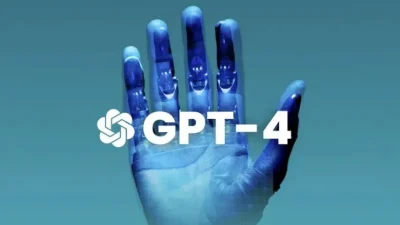Understanding how GPT-4 generates its outputs requires familiarity with key adjustable parameters. These settings, including tokens, temperature, and response length, can significantly affect the relevance, precision, and creativity of the responses generated by the model. In this article, we’ll delve into each parameter, providing insights into their functionality and real-world applications.

What Are Tokens?
Tokens are fundamental to how GPT-4 processes and generates text. They represent pieces of language—words, characters, or parts of words—that the model uses to predict and produce coherent sentences.
Definition and Functionality
- What is a Token? A token can be as small as one letter or punctuation mark or as large as a single word. For instance, the sentence “GPT-4 is powerful” is broken down into tokens as follows:
- “GPT” (1 token)
- “-4” (1 token)
- “is” (1 token)
- “powerful” (1 token)
- How Tokens Work GPT-4 uses tokens as building blocks for understanding and generating language. It predicts the next token based on the previous ones, ensuring logical flow and coherence. Each prediction step involves evaluating millions of potential tokens to determine the most suitable one.
Token Limitations
Tokens are limited per session or input. For GPT-4:
- The total token limit for input and output combined is typically 8,000 tokens or more, depending on the model version.
- Exceeding the limit truncates the input, which may result in incomplete or nonsensical responses.
Token Examples in Text Processing
| Sentence | Token Count | Explanation |
|---|---|---|
| Hello, world! | 3 | “Hello,” “world,” and “!” are separate tokens. |
| GPT-4 is amazing. | 5 | Each word and punctuation is a token. |
| Complex-tokenization. | 3 | “Complex,” “-tokenization,” and “.” are tokens. |
Best Practices for Managing Tokens
- Keep prompts concise to leave room for longer responses.
- Use summaries or bullet points to reduce token usage.
- Be mindful of token limits for complex queries.
Temperature: Controlling Creativity
Temperature is a parameter that controls the randomness of GPT-4’s output. Adjusting this setting affects how creative or deterministic the generated response will be.
What is Temperature?
Temperature operates on a scale from 0 to 1, influencing the model’s probability distribution for selecting the next token. Here’s how:
- Low Temperature (e.g., 0.2):
- The model favors highly probable tokens.
- Output is deterministic and focused.
- High Temperature (e.g., 0.8):
- The model considers a broader range of possible tokens.
- Responses are creative and diverse but may lack precision.
Effects of Temperature
Low Temperature:
- Best for technical, factual, or precise outputs.
- Examples: Mathematical calculations, coding assistance.
High Temperature:
- Ideal for brainstorming, storytelling, or artistic tasks.
- Examples: Generating creative writing, marketing slogans.
Comparing Responses at Different Temperatures
| Temperature | Response Example | Use Case |
| 0.2 | “The capital of France is Paris.” | Factual information |
| 0.8 | “France is known for Paris, wine, and art!” | Creative description |
Adjusting Temperature for Optimal Results
- For accuracy. Keep the temperature low (0.0–0.3).
- For creativity. Raise the temperature moderately (0.6–0.8).
- To balance. Experiment with a mid-range setting (~0.5).
Response Length: Managing Output Scope
Response length determines the number of tokens in GPT-4’s output. By setting this parameter, users can control how detailed or concise the response will be.
How Response Length Works
- Maximum Tokens. Users specify the maximum number of tokens GPT-4 can generate. This ensures outputs stay within desired limits.
- Minimum Tokens. Ensures that responses meet a baseline length, useful for prompts requiring detailed answers.
Practical Applications
- Short Responses:
- Suitable for quick answers or summaries.
- Example: “Yes, that is correct.”
- Long Responses:
- Useful for in-depth explanations or multi-step processes.
- Example: “To solve this equation, follow these steps…”
Challenges of Response Length
- Overly Short Responses. May lack depth or fail to fully address the prompt.
- Overly Long Responses. Risk verbosity, redundancy, or going off-topic.
Response Length Settings
| Length Type | Token Limit | Example Use Case |
| Short Response | 50–100 | Quick facts, yes/no answers |
| Medium Response | 150–300 | Brief explanations |
| Long Response | 500–800 | Detailed guides, technical solutions |
Balancing Parameters for Desired Outputs
The interplay of tokens, temperature, and response length is crucial for achieving optimal results. For instance:
- Combining low temperature with medium response length yields precise, structured outputs.
- Using high temperature with short responses encourages concise creativity.
Use Cases for Different Settings
- Academic Writing:
- Tokens: Manage within the session limit for structured essays.
- Temperature: 0.2 for factual accuracy.
- Length: Medium to long for detailed arguments.
- Creative Writing:
- Tokens: Allow flexibility for rich narratives.
- Temperature: 0.7–0.8 for imaginative outputs.
- Length: Variable, depending on the story scope.
- Technical Queries:
- Tokens: Precise input with low redundancy.
- Temperature: 0.0–0.2 for exact answers.
- Length: Short to medium for clarity.
Conclusion
Mastering GPT-4’s parameters—tokens, temperature, and response length—enables users to tailor responses to their specific needs. By understanding how each setting functions and interacts with others, users can enhance both the quality and relevance of outputs. Whether crafting creative content or solving technical problems, these parameters provide the flexibility needed for diverse applications.





